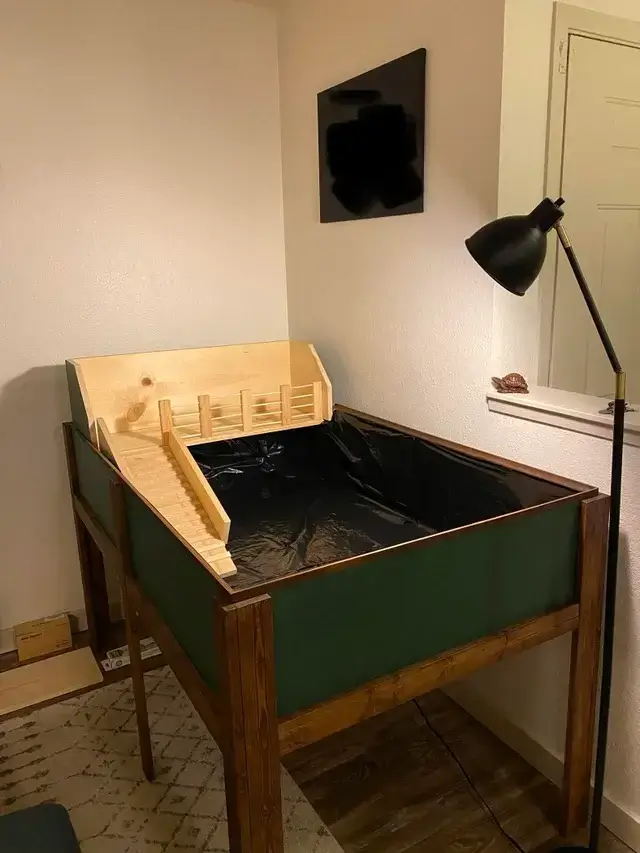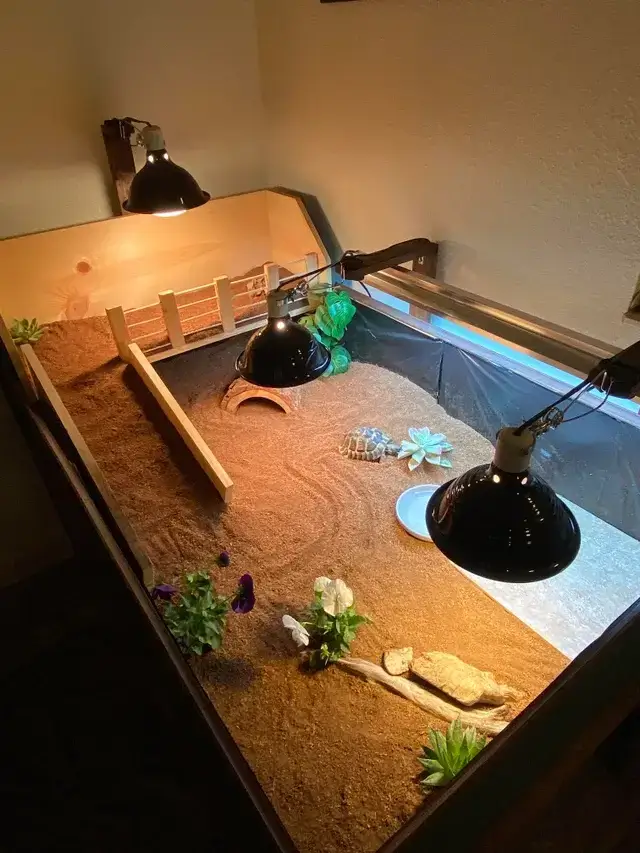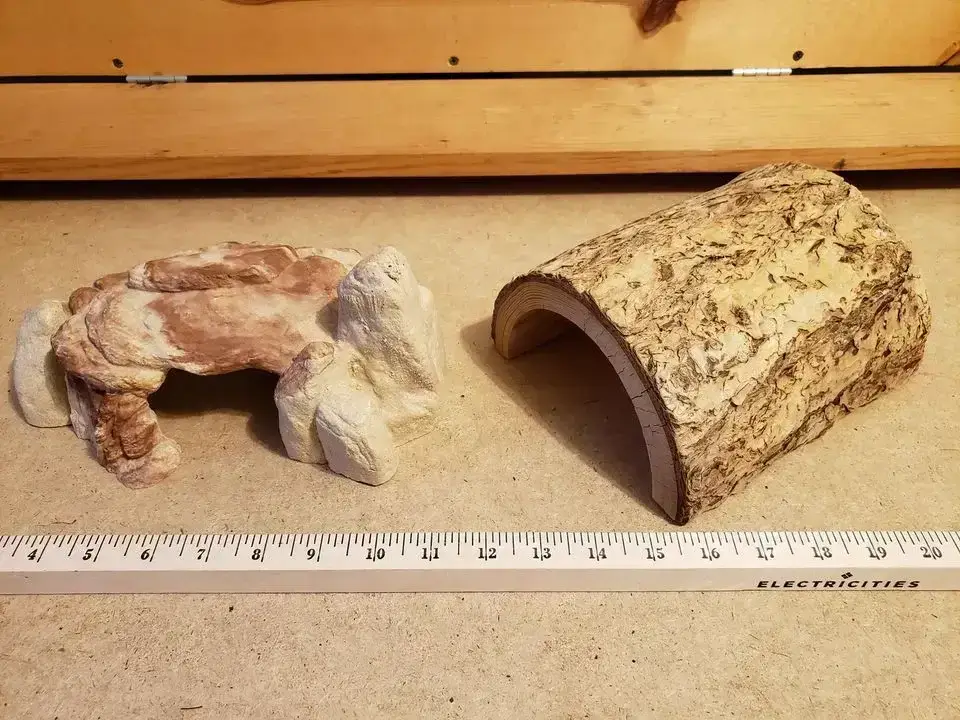Part of being a responsible pet owner is making sure that all of your pet’s needs are met, whether it’s a dog, a cat, or of course, a tortoise.
Food, clean water, a proper home, and the right lighting and temperature are a must. But one thing most people tend to forget is entertainment.
Because tortoises tend to take things slow, a lot of people think they don’t need mental stimulation, but that’s where they are wrong.
Yes, tortoises do indeed get bored. Despite how slow they are, they can be inquisitive creatures, and they love to explore.
That is why an enclosure that is too small, or one that does not have any visual barriers, where your tortoise can see one end of the habitat from one end, can bore them rather quickly. The lack of variety in food can also bore them.
A tortoise that is not enriched enough can develop a destructive personality and can even affect its growth.
How Do You Entertain a Tortoise?
There are many different ways to keep a tortoise engaged. Many of them are pretty straightforward.
Unlike dogs, cats, or even humans, tortoises don’t need attention to feel engaged.
Rather, they need stimulation. They may not look like it, but tortoises can travel for miles in their native home range, so they need plenty of exercise in captivity.
For more specific ways to stimulate your tortoise, read on.
Bigger Enclosures
As we’ve said before, tortoises are used to walking around in their wild habitats. As such, a huge space they can walk around in can be more than enough to keep them entertained.
Tortoises do need a large space to live in already but adding just a bit more to that is not only good for their physical health, but it’s also good for them mentally.

As a rule of thumb, at minimum, tortoise enclosures should be at least 4 times the length of a tortoise by 8 times their length.
So, a tortoise that is a foot long should have an enclosure that is 4 feet by 8 feet. Any extra space you can give them beyond this can count as enrichment for your pet.
It will also help if you have the proper substrate. Anything too loose, and your tortoise will have a hard time walking, and won’t be able to take advantage of such a huge space.
Visual Barriers
Having a large space for your tortoise would not matter much if it’s empty. If your tortoise can see the other end of an enclosure from the farther end, then they will still get bored.
Tortoises have the instinct to walk as far as they can see. Having an empty enclosure means they will do a lot of pacing back and forth. Although this may seem like a good exercise for them, this can stress them out a lot.

It’s a good idea to dot your enclosure with visual barriers, places that your tortoise can use as a waypoint to rest or hang out before they start moving again.
Visual barriers are also a good way to make your enclosure feel bigger for your tortoise if all you can offer them is the minimum enclosure size.
Good visual barriers include plants, both artificial and real, rocks, and pieces of wood.
Climbing
As we’ve mentioned before, tortoises love to explore their surroundings. This also helps them get some much-needed exercise in a relatively small enclosure.
One such way for you to satisfy this need is by giving them objects to climb on. Different-sized rocks can do the trick, but so can pieces of wood, small logs, or other random objects you can find in and around your home.
Just make sure that whatever you put into your tortoise’s enclosure has been properly washed or disinfected.

It would also help if you don’t level or flatten your tortoise’s substrate. Putting little hills or ditches on your substrate can help simulate the uneven ground tortoises that tend to travel on in the wild.
Climbing also lets your tortoise trip its claws, especially if they climb over rocks or wood. These rough surfaces help file down their claws naturally.
Digging
Not all tortoises are into digging, but those that are would appreciate being able to do so. As such, having a loose enough substrate can help them with that.
Some tortoises might even bury themselves in the substrate, which helps with temperature control if they feel too warm or too cold. So, if your tortoise suddenly disappeared, don’t worry. They might just be hiding under the substrate.
Of course, not all substrate is suitable for digging, but if you want one that your tortoise can dig into, dirt is a good candidate. Just make sure that it’s not too wet or too dry, since either state can be messy.
Of course, if you’d rather not replace your current substrate, you can always try “mounding” your tortoise’s dig spot.
Place your chosen digging substrate on one corner of the enclosure and form a mound. Your tortoise will then dig into that mound instead of into your current substrate.
To make your mound more structurally secure, you can put a plastic container on top of it with a hole big enough for your tortoise to enter.
Digging is also a great and natural way to keep your tortoise’s claws trim.
Hides
Another way to help enrich your tortoise is to give them hides. Hides aren’t just a good place for your tortoise to rest and unwind, they can double as play areas for your tortoise as well.
You can place multiple hides on your tortoise enclosure, one closer to your heat lamp, one that’s farther, one that is damper, whilst another not so.

This temperature and humidity gradient encourages your tortoise to find the best place for them depending on their current mood.
Some hides can also double as climbable toys, or even scratching posts, which we will talk about more later.
Scratch Posts
Back in the day, when not much was known about turtles and tortoises, people believed that a tortoise couldn’t feel anything through their shells.
Of course, we know better now. Tortoiseshells have nerve endings all over their shells. The shell itself is not as sensitive as other places, but tortoises can still feel through it.
If you haven’t yet, you should try scratching your tortoise’s shell. They may actually “dance” for you.
To take advantage of this, try adding objects to your enclosure that your tortoise can rub their shell against.
Plants with a hard stem are great candidates, but rocks and pieces of wood should work, too. You can also use an old toothbrush on your tortoise’s shell just to play with them.
Just make sure you washed the toothbrush properly beforehand.
Balls
Although not all tortoises are fans, some of them do like to play with balls, particularly the brightly-colored ones.
Tortoises do love pushing them around. Some would even chase after them if you roll the ball away from them.
Of course, you can also use pebbles instead. Some tortoises love rearranging furniture. Just make sure the pebbles you put into the enclosure are properly cleaned or disinfected.
Whatever toys you do introduce to your tortoise, make sure you switch them out regularly. This is to help keep things interesting for your pet, so they wouldn’t get bored with a specific toy too quickly.
Playing with Food
Like we’ve said before, tortoises can be very food-driven, so there are plenty of ways you can entertain them through their food.
A good way to do this is to simply put more variety in what you feed them. Tortoises do appreciate brightly colored foods, like carrots and squash, so add those to your daily menu of leafy green vegetables.

If you have forest tortoises, they would also appreciate non-citrus fruits once a week. If they’re a desert species, however, limit that to twice a year.
Where you feed your tortoise is just as important as how you feed them. You can invest in a cage-type stainless steel feeding dish.
This not only prevents your tortoise from stepping all over their food but also encourages them to be creative when they eat. Putting your food dish on top of a raised platform with ramps can also help give them a bit of exercise before your tortoise starts eating.
Another way that you can stimulate your tortoise using food is to hang the food by a string. Nothing too high, just enough for your tortoise to raise their bodies and stretch their necks to reach it.
For larger tortoises, you can also use interactive dog toys. These toys can help dispense tortoise pellets as your tortoise plays with them, giving them a tasty snack as a reward.
Just make sure not to share it between your dog and tortoise.
Final Thoughts
Just like any other animal, tortoises have needs beyond the basics, like food, water, and shelter.
A tortoise that hasn’t been stimulated properly can develop a whole host of mental health problems, all of which can make your life more complicated than it has to be.
Luckily, just like raising them, keeping your tortoise entertained is simple enough.
